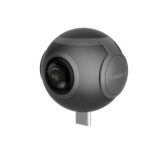Creating great YouTube content in a digital world is only half the struggle. The struggle comes in whether the content that you produce will be found by the right audience. YouTube can have great social presence, but at times, YouTube is not able to give the social reach that a creator needs to be discovered. That’s where cross-promotion comes in. Promoting through social media using other powerful social media platforms, such as Instagram, TikTok, Twitter, Facebook, and LinkedIn will increase visibility, allow creators engage new audiences and grow online communities.
Cross-promotion is not spamming links; it’s the process to customize content for each specific social media platform while still being able to engage audiences on the social space they spend the most time on.
The power of Social media in Growing YouTube
Everyone has their own space in the digital landscape of content. Instagram contains visual space for previews or behind-the-scenes. Twitter has a space for updates or trending topics. TikTok allows a clip to go viral and become a part of the social media discussion. Facebook contains the ability to build a community around a page or group. When YouTubers can identify the space they can occupy, then they can channel and layer their growth through a platform that coincides as a cross section thoroughly expanding their YouTube channel target audience reach, even without isolating attributes. For example, a fitness YouTuber may post workout reel to Instagram, motivational tips and quotes to Twitter, and encouragement clips to TikTok, each time directing their audience back to their YouTube channel to review the deeper content there.
Building Anticipation with Teasers and Behind-the-Scenes Content
A great example of cross-promotion would be building anticipation for a video before it drops. Posting behind-the-scenes pictures, or short teaser video clips, or countdown stories will help hype audiences across platforms. This tends to work well on Instagram Stories, TikTok previews, and Twitter threads.
When institutions allow audiences to see just a glimpse of the creation process, creators build a relationship of interest. This is where fans build anticipation for the forthcoming video so that they rush to watch it as soon as it goes live. For creators on YouTube, the first 24 hours after a video goes live are important for growth, and the effective cross promotion can make sure that creators have built a wave of viewers along the way too.
Connecting Communities Between Platforms
Cross-promotion is more than just linking a webpage. It’s about communities. Creators create communities with their audiences and need to continually engage with them, understanding that those real conversations convert audiences from viewers to fans and create a much more serious impact on long-term loyalty. Engaging with fans when they respond to comments on Instagram, or react to tweets, or join in on conversations in Facebook groups is creating moments through which YouTubers can develop fans, and establish their personality outside the videos they create.
These moments are impactful because they build fans who feel engaged with the content, valued within the community, and feel a part of the creator’s journey, or part of something bigger. Fans are generally more likely to share the content a member shares with their friends or in general recommend the channel to friends or colleagues, or even engage on the content over the long run.
Collaborations and Cross-Audience Sharing
Collaborations are a great way to cross-promote. Anytime a creator collaborates, they are allowing another creator to introduce their audience to a brand-new audience. Creators can also utilize their social media presence to tease or co-promote on Instagram, TikTok, or Twitter, so their community sees their partners’ videos on Youtube.
Cross-promotion between creators is best when their partnership feels organic. A cute example would be a travel vlogger collaborating with a food vlogger, where each creator’s audience has something to gain. The travel vlogger, introduces the travel destinations and the food vlogger, introduces the local cuisines. This newly shared audience may want more from both creators and ultimately subscribe to both creators’ channels, thus broadening the reach of both creators. Social media can help facilitate these collaborations so both creator’s communities collaborate on the YouTube video.
- Making a 30 second teaser for TikTok
- A carousel of screenshots or quotes on Instagram
- A thread for twitter
- A watch party event on facebook
The end result is the creator can prolong the life of their content that feels unique and fresh, in different formats. This will not only drive traffic back to the main YouTube channel, but will also help to build authority on all platforms as well.
Analytics and Continuous Adaptation
If you want to get the best outcome it is important to pay attention to analytics. When it comes to social media, each platform will have some kind of analytics to help creators better understand the genre of content that best resonates with them in front of their audience. For instance, YouTubers can maximize their social media efforts across platforms for cross-promotion when they look at engagement rates, click throughs, audience demographics etc. If teaser reels are uploaded to Instagram and get a high engagement rate, then a creator can better invest their energy and resources to promote themselves and their content there. If they aren’t driving much audience traffic with conversations on Twitter, they can try out a new approach to see if they get better results. Cross-promotion is meant to be attempted and interchangeable, which means continuous growth and adaptation in social media efforts.
Conclusion
As we are now in 2025 and moving forward, cross-promotion will only become more and more important in the future as endless platforms are developed and new social media platforms emerge. The algorithms of platforms, like YouTube, are designed to reward the creators who consistently provide EPS (engagement, promotion and subscribers) for their audience, taking action of that engagement through social media to gain access to these audiences.










